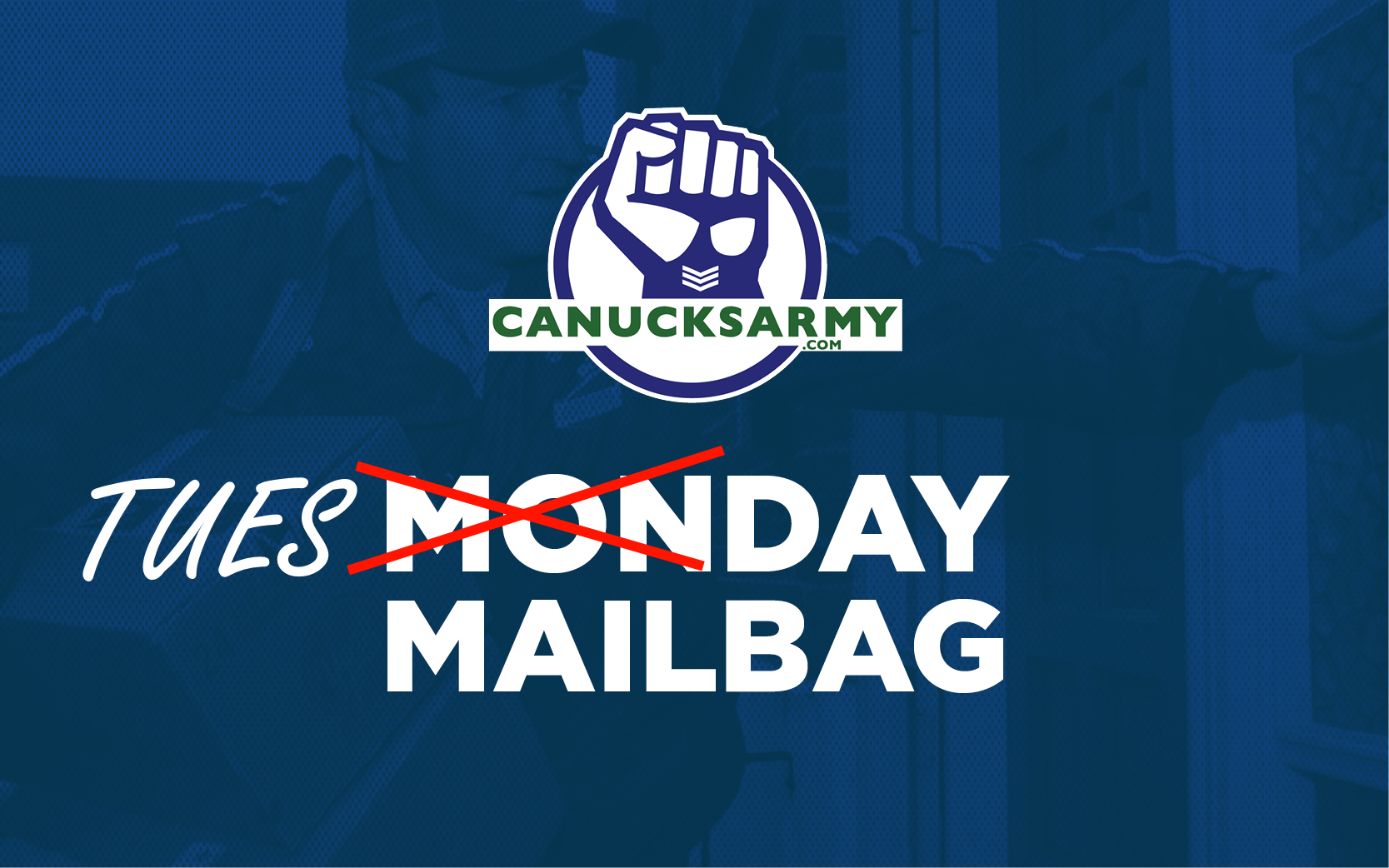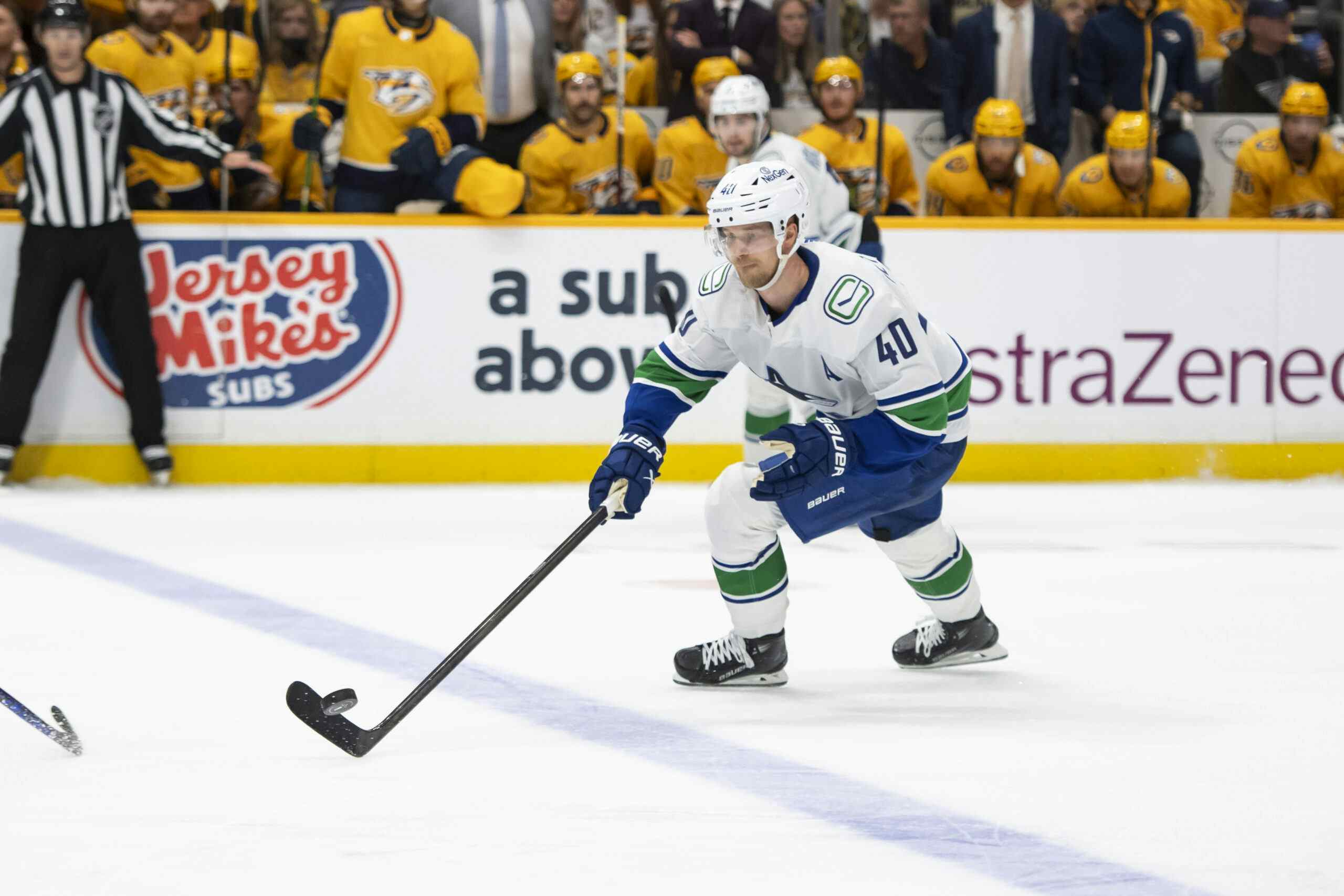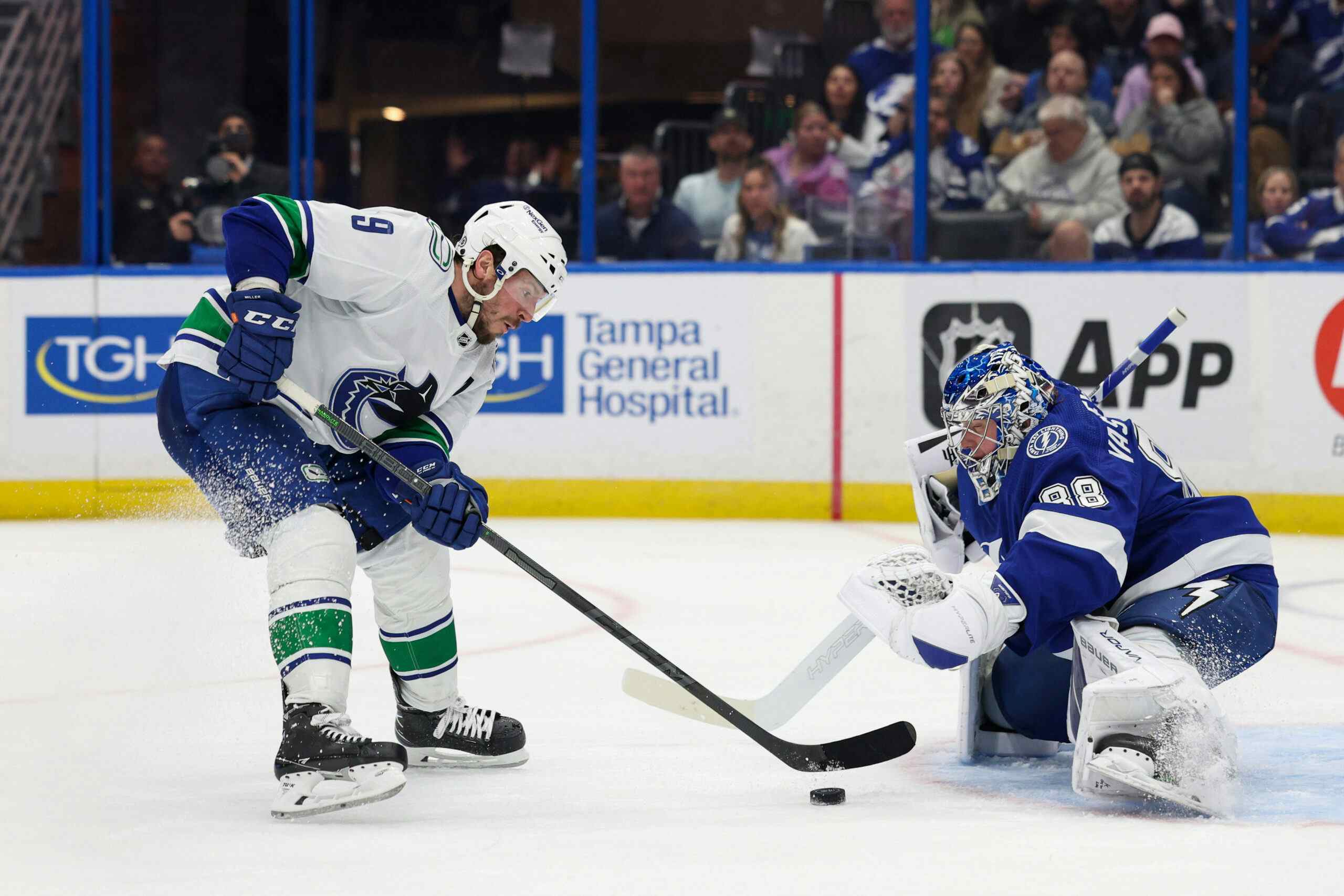Wearing the Maple Leaf: Counting Down the Canadian Canucks
By Taylor Perry
7 years agoThe Vancouver Canucks and Team Canada don’t exactly have a long and storied history. There have been a total of twelve international hockey tournaments featuring Canada’s best professionals at the highest level – thirteen if you include the 1972 Summit Series – since the franchise entered the NHL.
And for much of the organization’s 46-year existence, the Canucks were either an awful to mediocre team or else one whose best players carried foreign passports. During the franchise’s most recent run of success, for instance, the Canucks were led, in addition to a number of Canadians, by a bevvy of Swedes, Americans, Germans, Danes, and Finns. It was not a function of being a poor team – quite the opposite – but rather the international flavour of the Canucks roster that limited its relationship with Team Canada.
With the organization’s return to the NHL basement, it should come as no surprise that there are no Canucks representing Canada on the men’s senior squad at this month’s World Cup. What might also bode as something of an ill omen is that there are no Canucks on the under-23 North American squad, either. As Vancouver enters its down-cycle, the former is expected. The latter, meanwhile, could be viewed as a little disappointing.
As a Canadian and a Canuck fan, it is always an added bonus to cheer for your home country as well as your home team. Instead, this World Cup, the Canucks will be well-represented by other nations. The Sedins and newcomer Loui Eriksson will don the Swedish ‘Tre Kronor,” as will goaltender Jacob Markstrom (who is backing up mainstay Henrik Lundqvist, but is not expected to play). Team Europe, meanwhile, will feature Jannik Hansen (Denmark) and Luca Sbisa (Switzerland). So while every player on Team Canada and half of Team North America can theoretically be nicknamed “Canucks,” neither team will feature players who consider themselves Canucks, professionally-speaking. But let’s look back at the times where that wasn’t the case.
1972 Summit Series
Dale Tallon, Jocelyn Guevremont
Ok, yes, so the 1972 Canada-USSR series doesn’t exactly rate as an international best-on-best tournament. And neither Canuck player dressed for any of the eight games against the Soviet Union. It was, however, the first series of games featuring the best players from Canada against the best players of another country – so let’s go ahead and count it. Coach Harry Sinden had selected a large roster prior to the series and figured he would work everyone into at least one game. Of course, once the series commenced, Sinden realized that he would not have the luxury of resting his best players against such a strong opponent. As a result, a number of players never played a game. Guevremont, in particular, never made it into a game – including exhibition matches – and packed up his bags and went home prior to the games in Moscow, along with several other players. Coach Sinden left little doubt about his feelings towards Guevremont’s intention of leaving. “I’d be happy if you get out of here as quickly as you can,” he told the young Canuck defenceman.
Tallon, for his part, relished the opportunity practising with the best players in the NHL. Even though he never played in one of the eight games against the USSR, he did manage to play in the second exhibition game against Sweden in Stockholm between Games 4 and 5 of the Summit Series. He even registered a late primary assist on Phil Esposito’s game-tying shorthanded goal in the dying seconds of play. Ron Ellis said that Tallon and some other players who hung around the team but didn’t play, like Brian Glennie, were “100 percent behind the team all the time.” He even almost made his way into the legendary Game 8, taking the warmup before both Bill White and Pat Stapleton were confirmed ready to play.
1976 -1991 Canada Cups
Umm, nothing to see here, moving along …
1996 World Cup of Hockey
Trevor Linden
By 1996, Linden had established himself as a versatile forward for the Canucks, playing both centre and wing. Coming off a career year in 1995-96, where he registered 80 points (including 33 goals), Linden was slotted on a line with Vincent Damphousse and some guy named Wayne Gretzky. He scored a goal and an assist in eight games during the tournament. In contrast to his role with the Canucks, Linden slotted in as more of a grinder and physical presence for Team Canada, making hits and clearing space for his more talented linemates. The line failed to generate much in the three-game final series against the United States, however.
1998 Olympics
Trevor Linden
While Linden was not technically a member of the Canucks organization by the time the Nagano Games had started, having been traded to the New York Islanders, he was named to the team while still a Canuck. So we’ll let it slide. Linden’s play had declined precipitously since 1996, and his pick for the 1998 team was met with some skepticism. But he wasn’t alone, with players like Shayne Corson and Rob Zamuner (Rob Zamuner!) also being selected. Linden was injured at the time of selection and critics wondered whether another Canuck (*cough* Mark Messier *cough*) should have been named to the squad. Linden had a solid tournament for an otherwise disappointing Canadian team. Had Canada gone on to win the gold, his lone goal in the tournament – a late marker against the impenetrable Dominik Hasek – might likely have gone down in history as one of the great Canadian international hockey moments. Instead, Canada lost in an infamous shootout and Linden’s goal was relegated to a footnote of Canadian hockey history.
2002 Olympics
Ed Jovanovski
By 2002, Jovanovski had established himself as the smooth-skating, high-risk, offensive defenceman on the Canucks blueline. He had scored 12 goals and 47 points the previous season and was even named to the NHL All-Star Game (as a replacement for the injured Chris Pronger). He was therefore on the radar of Wayne Gretzky and the Team Canada brass in the summer prior to the Salt Lake City Games, earning a spot at the orientation camp in September. After being an alternate on the 1996 World Cup team (without playing any games), Jovanovski played his way onto the Canadian roster in 2002.
Jovanovski ended up turning in a sterling performance for Canada. Although he did not dress for the opening match against Sweden, Jovanovski proved to be an integral part of the Canadian blueline. His late efforts in securing the victory over the Finns in the quarterfinal seemingly defined “Canadian heart and grit.” And he made a fantastic flip pass on a power play that resulted in Joe Sakic’s gold-medal winning goal. All told, he earned 3 assists in six games and solidified himself as a Team Canada mainstay going forward.
2004 World Cup of Hockey
Ed Jovanovski
If all had gone according to plan, there would likely have been two Canucks on this version of Team Canada. But due to an incident involving Todd Bertuzzi, Steve Moore, and a hard ice surface, there would only be one – and that would be the same lone player who represented Canada in Salt Lake City. Jovanovski was coming off an injury-riddled 2003-04 season that saw him dress in only 56 games, but he had gained a degree of seniority by virtue of his 2002 gold medal. Already without Chris Pronger and Rob Blake to begin the tournament, Team Canada would be increasingly reliant upon JovoCop.
His World Cup experience didn’t last long, however. In the opening game against the United States, Jovanovski slid into the U.S. net with former Canuck teammate Eric Weinrich on top of him. The incident caused Jovanovski to suffer a cracked rib and a second-degree MCL sprain in his right knee. He was replaced thereafter by young San Jose defenceman Scott Hannan. Although Canada would go on to win the tournament in 2004, that game would prove to be Jovo’s last in a best-on-best format.
2006 Olympics
Todd Bertuzzi, Ed Jovanovski*
The Canuck who should have been on Team Canada in 2004 and wasn’t, instead was named to Team Canada in 2006 when he arguably should not have been. Bertuzzi was chosen based on some inspired play in the weeks leading up the roster selection, but in reality his game had declined noticeably over the past couple of years. Bertuzzi was a shadow of the 46-goal, bruising winger of 2003. He earned his spot based more on reputation than his current level of play. On the big ice in Torino, he often looked lost and slow. He recorded three assists in six games, but is primarily remembered for sitting in the penalty box serving an undisciplined interference penalty in the third period of a scoreless quarterfinal against Russia. A young sniper by the name of Alexander Ovechkin scored on the man advantage to give the Russians a lead they would not relinquish.
*Ed Jovanovski was again named to the team, but had to withdraw due to injury. He was replaced by Bryan McCabe prior to the tournament.
2010 Olympics
Roberto Luongo
With the Winter Games taking place in Vancouver, it would have been truly disappointing for the Canucks to not have a representative in the Canadian lineup. Thankfully, they had an all-star goaltender waiting in the wings. Luongo had represented Canada at both the 2004 World Cup and 2006 Olympics, but this was his first time competing for Canada while a member of the Vancouver Canucks. He played in the opener – an 8-0 shellacking of unheralded Norway – and then sat on the bench for the remaining preliminary games as Martin Brodeur took the reigns. Brodeur, however, fared miserably in his last start against the Americans, losing 5-3, and was directly responsible for a couple goals against. Coach Mike Babcock therefore inserted Luongo into the net for the qualification game against Germany (which Canada won 8-2) and the team never looked back. Luongo was instrumental, too, making a miraculous save against then-Canuck teammate Pavol Demitra in the waning seconds of the semifinal versus Slovakia.
Not an insignificant contribution from a player pegged as a backup to start the tournament.
2014 Olympics
Roberto Luongo, Dan Hamhuis
Although neither Canuck was a major part of the 2014 Olympic champions, this was the first time that two Canucks actually dressed for Team Canada at a best-on-best tournament. Luongo registered a shutout against Austria in the second game and never played again, while Hamhuis played very limited minutes (but more than PK Subban). Hamhuis played so little, in fact, that he counted exactly one shift in the final two games against the United States and Sweden combined. His one shift – all 1:04 of it, in fact – came at the very end of the Gold Medal Game. Yet that shift gave us a wonderful photo which might overstate his total contribution to this iteration of Team Canada, but dammit, it still looks good.
Recent articles from Taylor Perry





